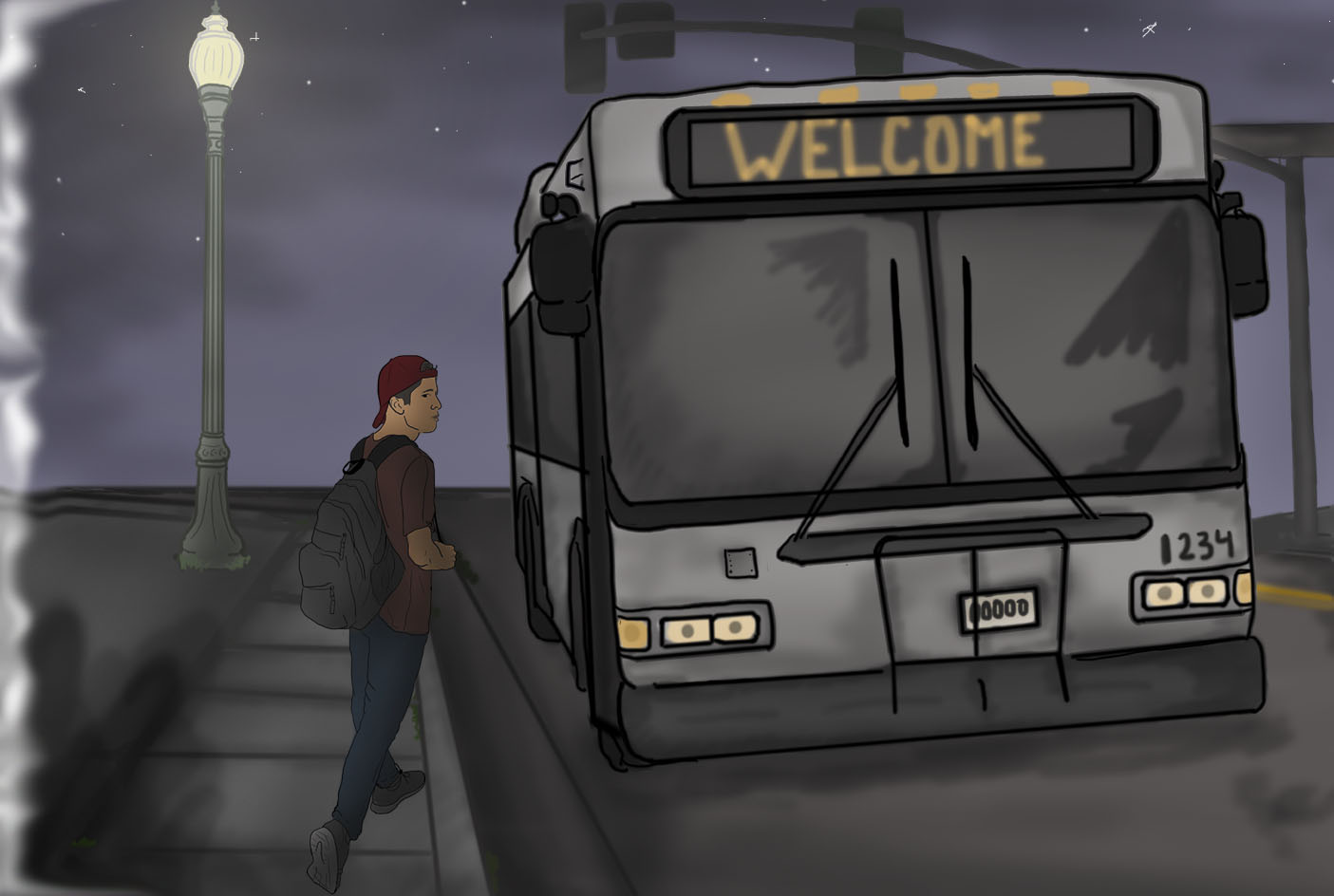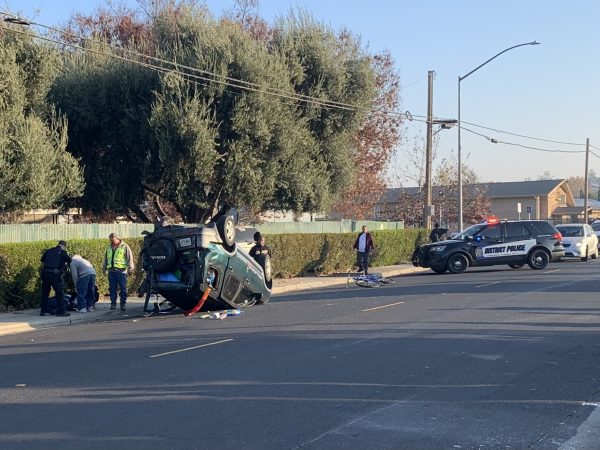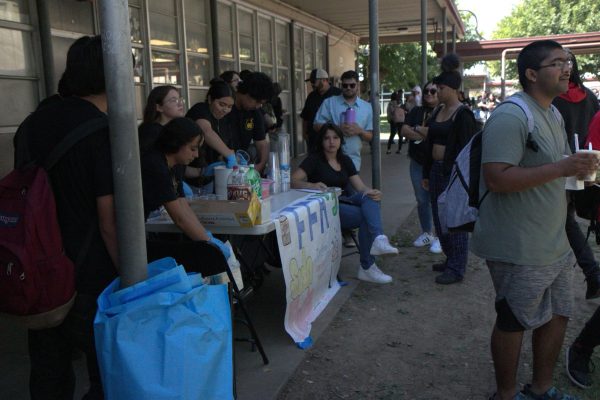Dangers of riding the bus
Walking the streets — empty streets, with hardly any light to see. Walking the streets without knowing what awaits. Walking the streets daily simply to get to school. Walking the streets in order to get to a bus stop is part of many students’ lives. Already struggling with waking early enough to catch the bus, qualifying for a bus pass, students especially struggle when the time changes leading it to be extremely dark in the mornings.
One of those students is senior Cassandra Watson.
This darkness can make it both difficult and dangerous for students to walk to the bus stop alone, Watson said. “It all just really depends on where you live.” To her the central area of Stockton can be one of most dangerous places for a student.
In downtown Stockton, Alexis Brown, a freshman, thought of it as “just another day.” She was walking to the bus stop as usual, when she heard a man yell at her from a distance. Alone and vulnerable, Brown began to run away. “He kept yelling and began to run after me.” As she approached her bus stop, the man disappeared. For Brown this was the most frightening experience she’s encountered ever since she began taking the bus.
Starting high school forced her to take the bus, being the only available transportation to school she can get. Living downtown forces her to wake up at 5 a.m. in order to catch the bus on time. Although the distance from her home to the bus stop is short, Brown continues to feel unsafe on her own.
Because of that unforgettable incident, Brown is more cautious when it comes to the bus. “After what happened I quickly told my mom. From now on my mom walks me to the bus stop in the mornings everyday,” she said.
Danger doesn’t only follow students outside the bus. It sometimes follows them inside the bus.
For junior Moses Richardson riding the bus is something he does daily. He takes the 80 line to get home. On a day he was simply going home as usual, two men began to fight on the bus. “There was broken glass and there was bleeding,” Richardson said. The bus is promised to be a “Safe Place” as imprinted inside, but situations like this often occur often, unfortunately, students report.
“No place in the world is safe, what makes you think the bus is?” he asked.
This danger, of course, does not affect all. Like freshman Sebastian Stone. “Taking the bus is repetitive,” Stone said. He lives about two minutes away from the nearest bus stop. “Nothing really happens, nothing really changes.”
Not being able to relate to Stone, one group of friends believes otherwise. Junior Antara Bullock, sophomore Elyaysha Williams and sophomore Davon Turner all have one thing in common beyond taking the bus. It’s the similar situations they’ve encountered.
Bullock admits she’s lost count how many times she’s been followed while walking to her house after school. “When I get off the bus I’m often followed by car or even a person. By now I’m used to it. I just ignore it,” she said. She lives on Country Club by Safeway, a neighborhood she describes as “ghetto.”
Turner leaves home at 6:45 a.m. to catch the bus. This year he witnessed a car wreck while walking to the bus stop. “I felt shocked that I even got to witness that,” he said. His experiences unfortunately don’t end there. “These two women began to fight on the bus and one of them had a baby beside her.” The other students taking the bus started to laugh and to record what was going on.
“It’s Stockton,” he said.
Agreeing with Turner, Williams thinks these incidents are unavoidable. She’s been taking the bus for nine years on her own. Her parents aren’t available to give her rides.
“Taking the bus shapes you,” she said. “You get to see how the world really is.”
Upon hearing these stories, Assistant Principal Linda Roberts expressed concern. “Students tend to be a target,” she said.










